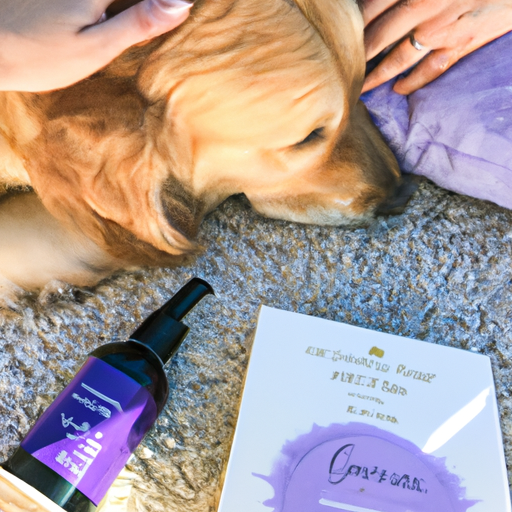Understanding Your Dog’s Anxiety
Understanding your dog’s anxiety is the first step to helping them. Anxiety in dogs can manifest itself in various ways, including excessive panting, pacing, or destructive behavior. Your dog may also seem unusually clingy or may start to bark or whine more than usual.
Just like humans, dogs can experience anxiety due to a multitude of reasons. Some possible causes could include:
- Changes in their environment
- A traumatic past experience
- Separation from their caregiver
- Fear of certain situations or objects
Calming Techniques for Your Dog
Once you’ve identified that your dog is dealing with anxiety, there are several techniques you can use to help calm them down:
-
Create a Secure Environment:
Provide a quiet, safe space for your dog where they can retreat to when feeling anxious. -
Use Calming Sounds:
Play soft music or white noise to help distract your dog from the source of their anxiety. -
Practice Desensitization:
Gradually expose your dog to the source of their anxiety in controlled, low-stress situations. -
Provide Plenty of Exercise:
Regular physical activity can help reduce anxiety by burning off excess energy and promoting better sleep.
Dietary and Medical Interventions
Sometimes, changes in your dog’s diet or medical interventions might be necessary to manage their anxiety. This could include:
- Anti-Anxiety Medication: Consult with your vet about the possibility of using medication to manage your dog’s anxiety.
- Dietary Supplements: Certain supplements, such as those containing chamomile or valerian root, may have calming effects on dogs.
- Prescription Diets: Some dog food companies manufacture prescription diets designed to help manage anxiety.
| Intervention | Description |
|---|---|
| Anti-Anxiety Medication | Prescription drugs to reduce anxiety |
| Dietary Supplements | Natural substances to promote calmness |
| Prescription Diets | Specialized dog food to manage anxiety |
Training Techniques to Reduce Anxiety
Proper training can also be a great tool for managing your dog’s anxiety. Consider the following techniques:
- Counter-Conditioning: This involves changing your dog’s emotional response to the anxiety-inducing stimulus.
- Positive Reinforcement: Reward your dog when they show calm behavior in situations that would typically cause them anxiety.
Regular Vet Check-Ups
Regular vet check-ups are essential for managing your dog’s anxiety. Your vet can help identify potential triggers and suggest appropriate treatment options.
FAQs
Q: Can dogs outgrow anxiety?
A: While some dogs may improve over time, others may need ongoing management.
Q: Is my dog’s anxiety my fault?
A: No, anxiety can develop due to various reasons beyond your control, including genetics and past trauma.
Q: What are signs of anxiety in dogs?
A: Common signs include excessive panting, pacing, destructive behavior, and unusual clinginess.
Q: Where can I get professional help for my dog’s anxiety?
A: Consult with your local vet, who can provide guidance and potentially recommend a professional dog trainer or animal behaviorist.
Remember, as a caregiver, your love, patience and understanding are vital in helping your dog manage their anxiety.



